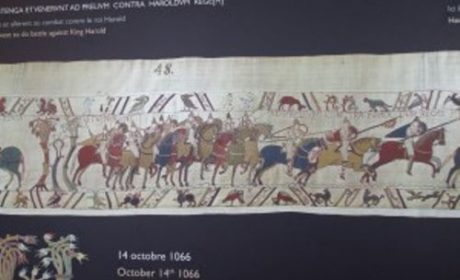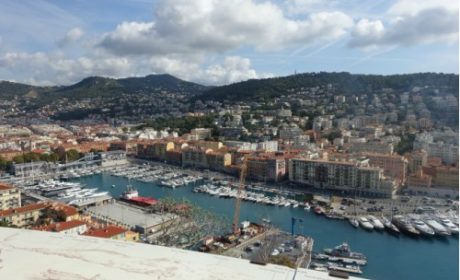There are those who refuse to go back to places they’ve already visited, which is understandable considering how big the world is. However, sometimes revisiting a favorite bustling city or off-the-beaten-path location can be just as good as the first time around, if not better. Today’s guest contributor, Tuve Floden, decided to visit Aix-en-Provence after a full two decades since his initial trip to see if this charming French area was still as special as the first time around.
It had been almost twenty years since I visited Aix-en-Provence, but the old city streets and picturesque boulevards still felt the same.
The heart of town is a beautiful maze of stone walls and narrow lanes, bisected by the tree-lined grandeur of the Cours Mirabeau – a boulevard packed with shops and cafes, and ending in the tall statue of Roi Rene, the last king of independent Provence.

The influential painter Paul Cezanne was born in Aix and once sat along this same central boulevard with the novelist Emile Zola, enjoying a drink at the Brasserie Les Deux Garçons, a venue still popular with locals, celebrities, and tourists alike. The city’s quaint restaurants serve dishes like steamed mussels, duck breast, and wood-fired pizzas, often paired with regional wines like the famous Chateauneuf-du-Pape. Patisseries proudly display the local delicacy, calissons, a diamond-shaped confection made of candied fruit and almonds.

The city’s roots go back to the second century BC, when the Romans founded a settlement atop a number of hot springs. Aquae Sextiae, as it was then called, gave way to the name Aix, and some of the roman baths remain visible in the modern spa Thermes Sextius that now rests over the thermal springs. Aix’s Cathedral Saint-Sauveur, fully completed in the 16th century, also incorporates older elements, including a fragment of a Roman wall and columns from the same era.
Exploring the City
Walking amidst this history, I couldn’t help but stop at an open-air market in the center of town. Long stands with local fruit and greens lined the small square. Nearby, a rotating display of rotisserie chickens abutted a booth with fresh honey and baskets of lavender soap. In a corner, another vendor offered shelves of fresh fish beautifully displayed on a bed of ice. I picked up some succulent raspberries and local olive tapenade to enjoy later with a warm baguette.

Such markets are a regular affair in Aix – in addition to this daily venue in Place Richelme, there is a daily flower market one block north, next to the 17th century Hotel de Ville. Another market full of clothing, handicrafts, and antiques operates on Tuesdays, Thursdays, and Saturdays along the Cours Mirabeau and the top of Avenue Victor Hugo.

I wound my way to the tall statue of Cezanne at the Place de la Rotunde. With his backpack and walking stick, the artist appears equipped to trek into the hills for a view of Sainte-Victoire Mountain, the inspiration for a number of his paintings and still a popular place for walking and hiking.
My goal, however, was different. Following the self-guided walking tour “In the Steps of Cezanne”, I found the apartments where Cezanne had lived, the schools he attended, the sites where he exhibited his work, and the Cemetiere Sainte Pierre, where he is now buried. Then, climbing a mile further north into the suburbs, I arrived at his artist’s studio on Lauves Hill with a view back into the city and across the surrounding countryside. Cezanne worked here from 1902 until his death in 1906, while the panoramic overlook farther up the street was the site of many of his famous depictions of Sainte-Victoire Mountain.
Other Attractions
Strolling back into the city, I stopped at the excellent Granet Museum, a place where Cezanne took classes in drawing. The permanent exhibitions include a number of works by the museum’s namesake, local artist Francois Granet, as well as a beautiful set of plaster and marble statues from the 18th and 19th centuries. Works by 20th century modernists like Pablo Picasso, Fernand Léger, and Tal Coat, as well as paintings from 14th-19th century Europe round out the museum’s collection.
If you’re planning a trip to this beautiful French town, make sure to check out a list of hotels in Aix-en-Provence.
The new Hotel de Caumont Art Centre is well worth a visit too. The 18th century mansion and gardens were recently restored, opening as a museum and café in 2015. The rooms have been remodeled with period furniture, and recent exhibits have included works by the English painter Joseph Turner or, when I visited, a collection of photographs of Marilyn Monroe.
Outside the City
Without a car, I was happy to learn that the Aix-en-Provence Tourist Office advertises a number of day trips around Provence. These include an excursion to Marseille, a tour of the fjord-like calanques (white limestone inlets) along the Mediterranean, and a visit to the city of Arles, which features a full Roman amphitheater.
I opted for a day tour with multiple stops, capturing the rich history and culture of the region. We started with the city of Avignon, home to the Catholic pope for much of the 14th century. The medieval Pope’s Palace is right in the center of the town and hosts stunning frescoes by the Italian artist Matteo Giovannetti. Just outside the city walls is the Saint Bénezet Bridge, made famous by the French children’s song “Sur Le Pont D’Avignon.”

Our tour continued with a drive to the ancient Roman aqueduct Pont du Gard, a UNESCO World Heritage Site that towers over the Gardon River. Chateauneuf-du-Pape, a village renown for its red wines, was our final stop. Our small group toured a local winery and sampled some of their selection, returning back to Aix around 6:00pm.

I strolled through the city later that night, savoring a warm crepe as I walked past restaurants full of clinking glasses and happy chatter. Why had I waited so many years to come back? Aix has so much to offer, I knew I had to visit again soon.
Have you ever explored Aix-en-Provence? Come join the conversation at the My Itchy Travel Feet page on Facebook. Or send us an email with your thoughts.


